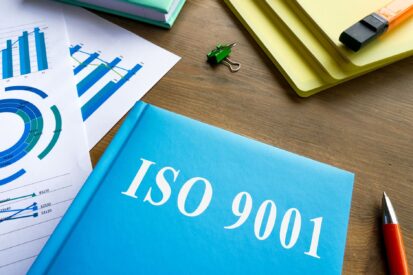As organisations worldwide acknowledge the importance of sustainability and environmental responsibility, an increasing number of businesses are adopting proactive methodologies to minimise their environmental impact. A key approach towards this goal is through the implementation of an Environmental Management System (EMS), built on the internationally recognised ISO 14001 standard. In this article, we will explore the core principles of ISO 14001, the benefits of adopting an EMS, and how it can contribute to your organisation’s long-term sustainability goals.
The ISO 14001 standard establishes a systematic framework for managing and minimising environmental risks, improving resource utilisation, and ensuring compliance with relevant environmental regulations and legislation. By implementing an EMS, organisations not only demonstrate their commitment to sustainable practices but also improve their bottom line and enhance stakeholder trust. An effective EMS encompasses all aspects of an organisation’s operations, from energy consumption to waste management, and serves as the foundation for ongoing environmental performance improvements.
At ISO 9001 Consultants, our team is dedicated to assisting organisations across Australia in their journey to implement and maintain robust EMSs in compliance with ISO 14001 standards. In the following sections, we will discuss the essential elements of ISO 14001, outline the process for achieving certification, and provide practical guidance on integrating sustainable practices within your organisation. Equip your business with the strategies and systems necessary to improve your environmental performance, strengthen stakeholder relationships, and support a greener future for both your organisation and the planet.
Boost Your Organisation’s Sustainability with ISO 14001: A Comprehensive Guide to Environmental Management Systems
Key Principles of ISO 14001
1. Environmental Policy and Commitment
A cornerstone of ISO 14001 is the establishment of a strong and clearly defined environmental policy, outlining an organisation’s commitment to reducing its environmental impact and continual improvement of its environmental performance. This policy should be developed by top management, communicated throughout the organisation, and reviewed periodically to ensure its ongoing relevance and effectiveness.
2. Risk-based Approach to Environmental Management
ISO 14001 adopts a proactive, risk-based approach to environmental management. Organisations are required to conduct comprehensive risk assessments to identify potential environmental aspects and impacts associated with their operations. By evaluating and prioritising these risks, businesses can implement appropriate controls, measures, and objectives to manage their environmental responsibilities.
3. Compliance with Legal and Regulatory Requirements
Ensuring compliance with applicable environmental laws, regulations, and other requirements is a critical element of ISO 14001. Organisations must maintain up-to-date knowledge of their legal obligations and implement processes to ensure ongoing compliance. Adherence to these requirements not only protects businesses from legal penalties but also demonstrates their dedication to environmental responsibility.
4. Continuous Improvement
Similar to other ISO standards, ISO 14001 promotes a culture of continuous improvement in environmental management. Regular monitoring, evaluation, and improvement of the EMS enable organisations to identify areas for progress, take corrective actions as necessary, and adapt to changing environmental conditions or regulatory requirements.
Achieving ISO 14001 Certification
5. Gap Analysis and Initial Planning
The first step toward ISO 14001 certification is performing a gap analysis, which assesses your organisation’s current environmental management practices against the ISO 14001 standard, identifying areas for improvement before seeking certification. Based on the gap analysis results, develop a project plan detailing the necessary steps, resources, and timeline for implementing an EMS compliant with the ISO 14001 standard.
6. EMS Implementation
Following initial planning, proceed with the establishment, documentation, and implementation of an EMS that aligns with ISO 14001 requirements. Core components of an EMS include a clear environmental policy, identification and assessment of environmental aspects, implementation of risk controls, and establishment of measurable environmental objectives and targets.
7. Employee Training and Awareness
Staff training and awareness are vital for the successful implementation and ongoing effectiveness of an EMS. Provide employees with the necessary knowledge and skills to perform their roles and responsibilities concerning the organisation’s environmental policy, objectives, and practices. Regular awareness campaigns and training can help maintain employee engagement in environmental management initiatives and strengthen the overall EMS.
8. Internal Audit and Management Review
Before the certification audit, conduct an internal audit of your EMS to verify compliance with ISO 14001 requirements and identify any non-conformities. Implement corrective actions as needed, and schedule a management review meeting to evaluate the overall effectiveness of the EMS, discuss the internal audit results, and make necessary adjustments to environmental objectives, policies, and performance indicators.
9. Certification Audit
The final step in achieving ISO 14001 certification is an external audit from a certified audit body, assessing your organisation’s EMS against the ISO 14001 standard. The audit consists of two stages: a documentation review and an on-site audit. Upon successful completion of both stages, your organisation will receive its ISO 14001 certification, indicative of its commitment to pursuing sustainability and proactive environmental management.
Leveraging the Benefits of ISO 14001
10. Improved Environmental Performance
Implementing an EMS based on ISO 14001 can help your organisation minimise its environmental footprint, utilise resources more efficiently, and reduce waste and pollution.
11. Enhanced Stakeholder Relationships
ISO 14001 certification signals to customers, suppliers, regulators, and the public that your organisation is committed to environmental responsibility, building trust and demonstrating transparency in your operations.
12. Cost Savings and Operational Efficiencies
Effective environmental management and resource optimisation can lead to cost savings by reducing waste, energy consumption, and material usage, ultimately improving your organisation’s operational efficiency.
Conclusion
Embracing ISO 14001 and implementing an effective Environmental Management System can greatly enhance your organisation’s commitment to sustainability and responsible environmental practices. By following the risk-based and proactive approach outlined in ISO 14001, you can improve your environmental performance, strengthen stakeholder relationships, and support the long-term success of your business. At ISO 9001 Consultants, our team of experienced consultants is ready to assist you in your journey towards ISO 14001 certification in Sydney. Reach out to us today to learn more about how we can help you strengthen your organisation’s commitment to a greener future.








Users Comments
Get a
Quote